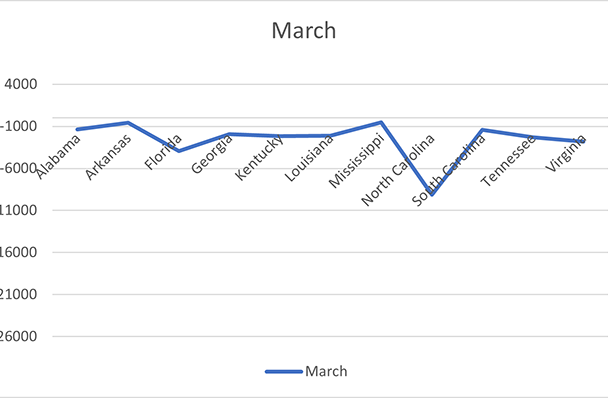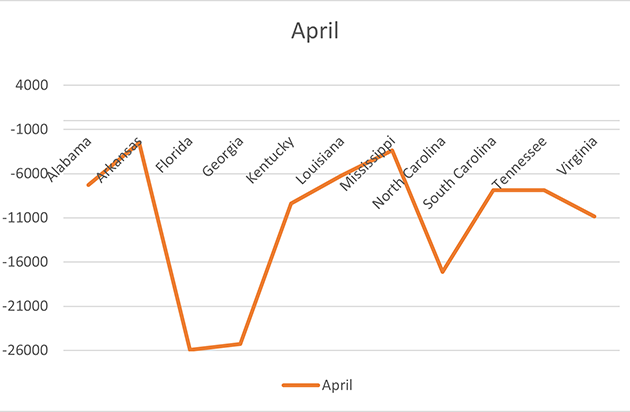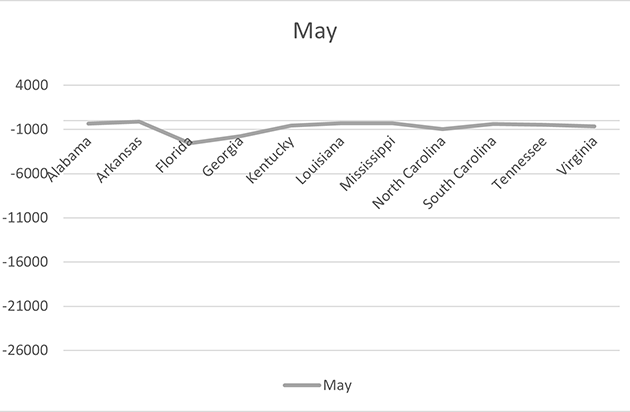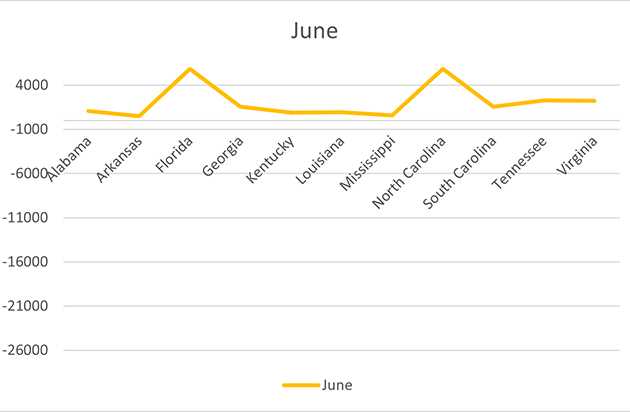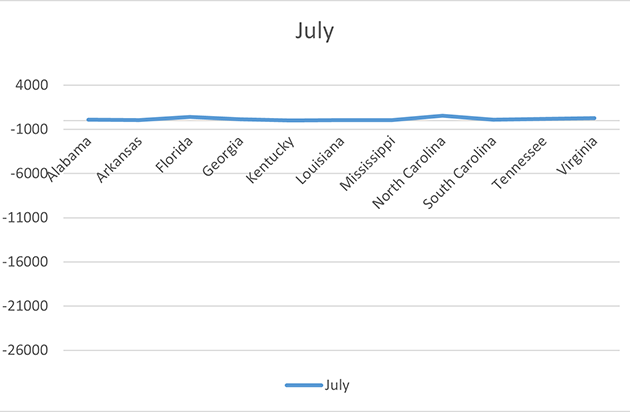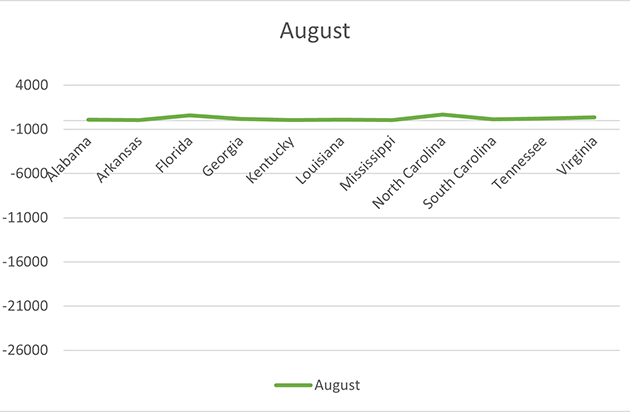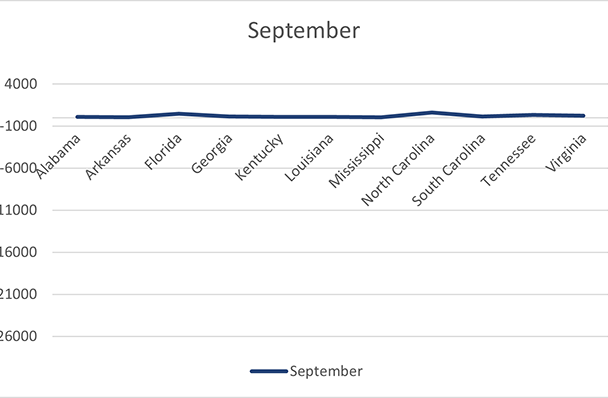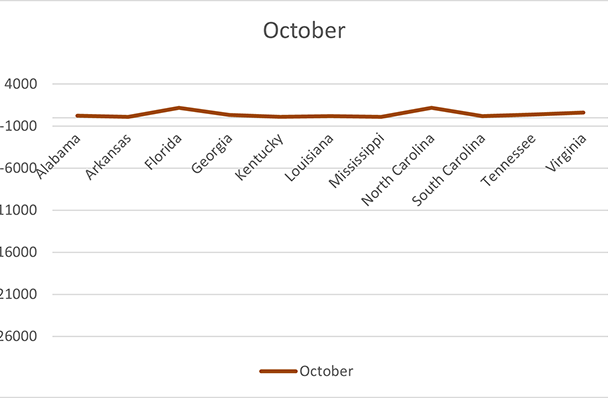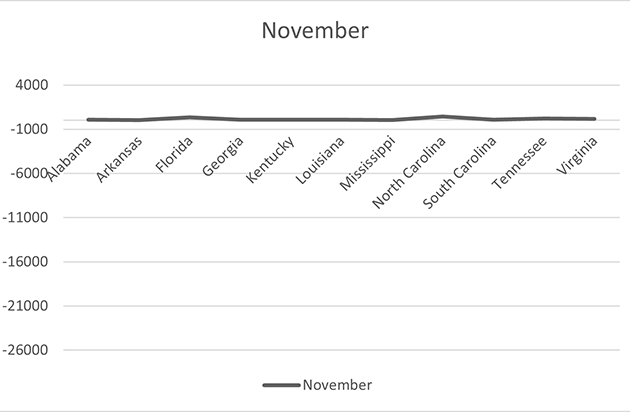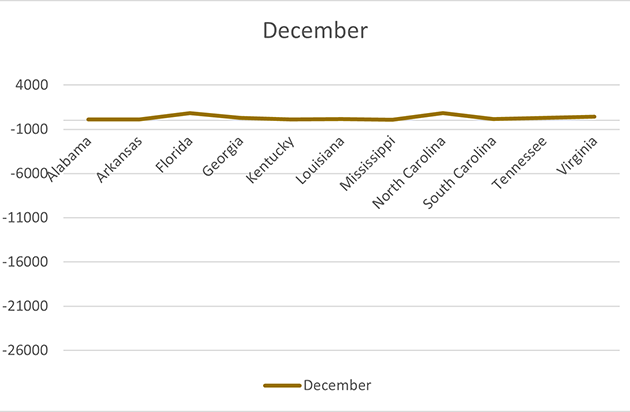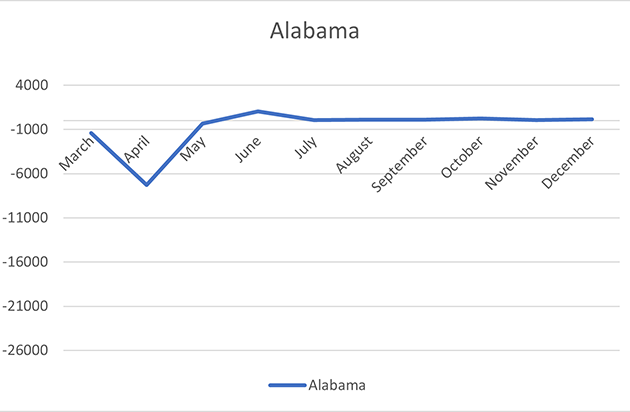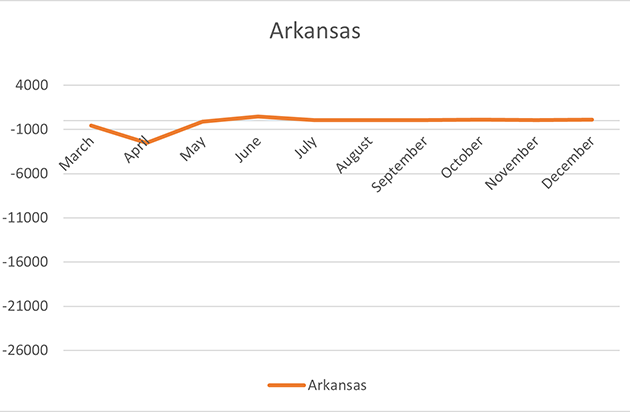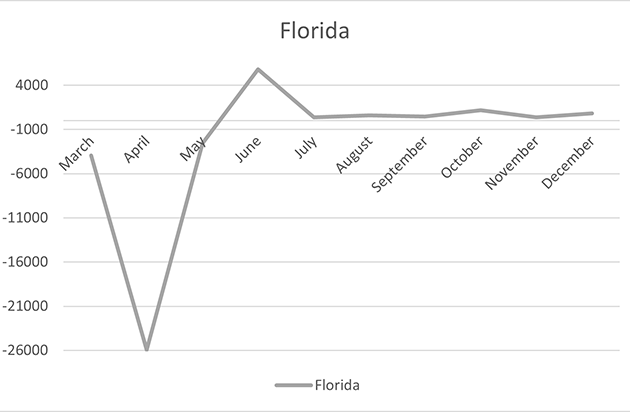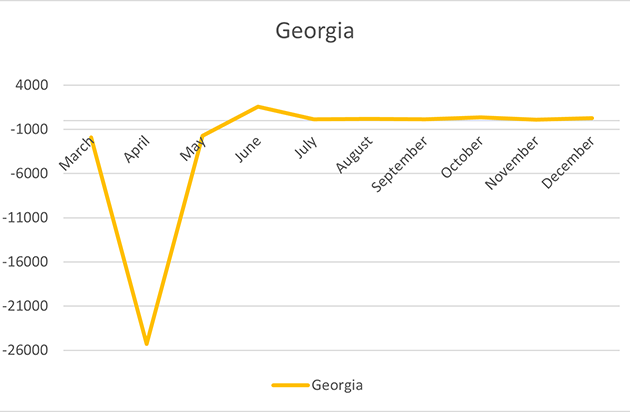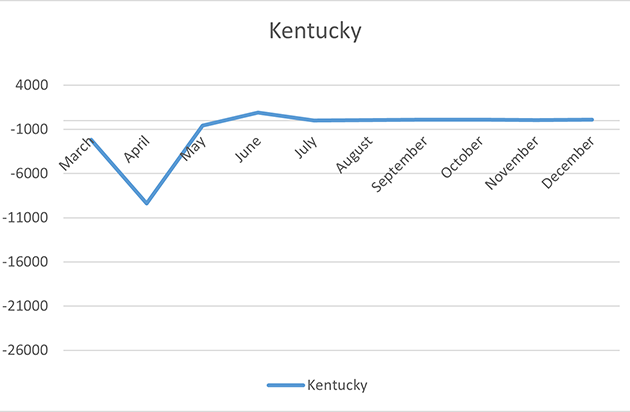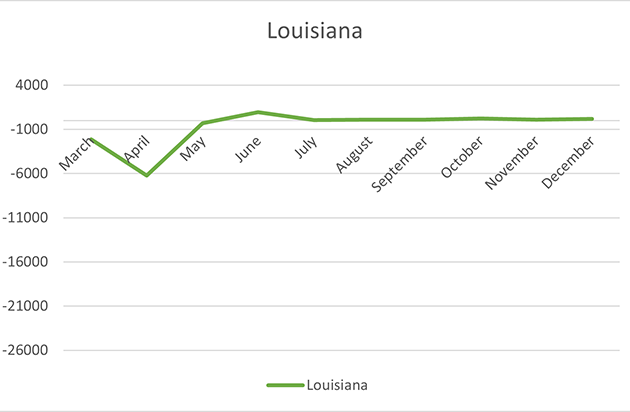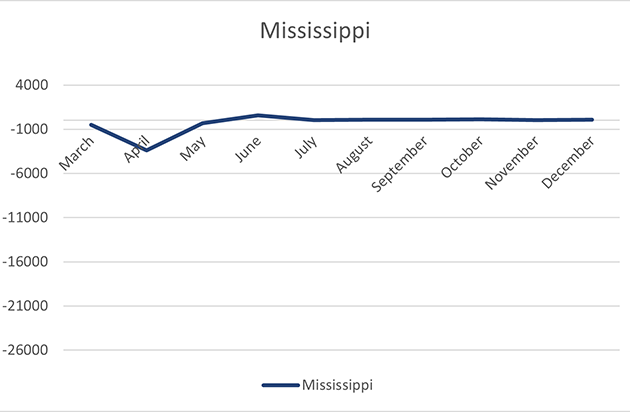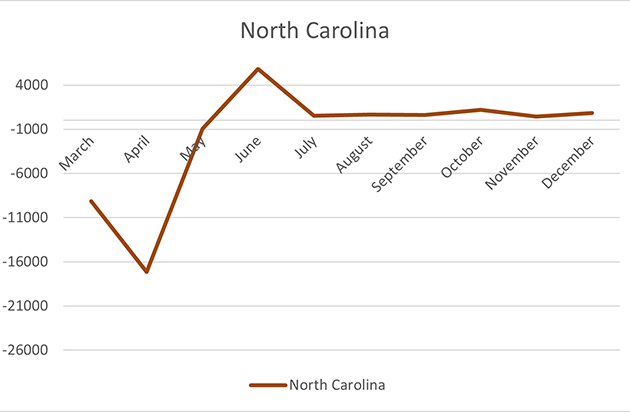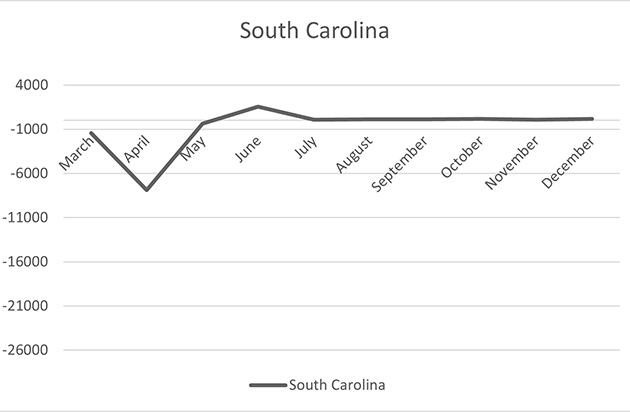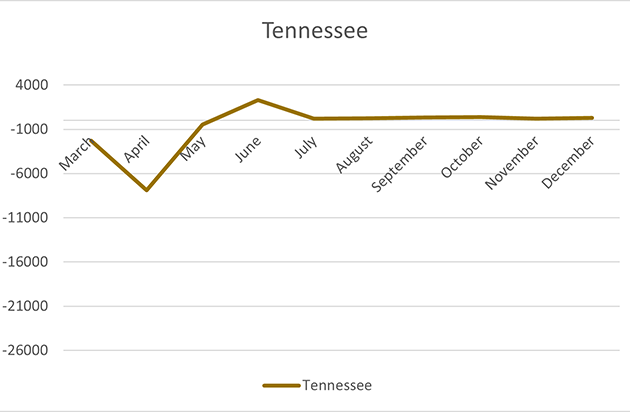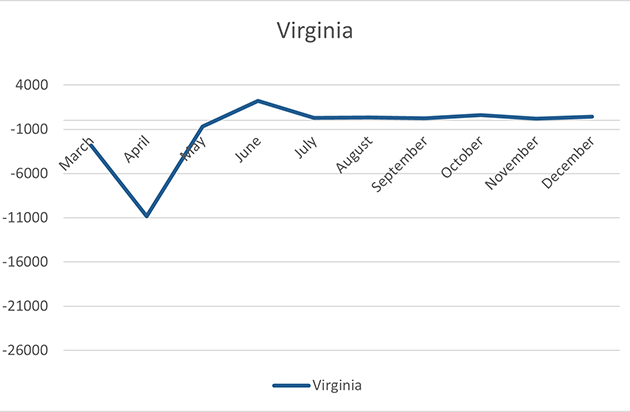Category: Policy
Our top blog posts of 2021
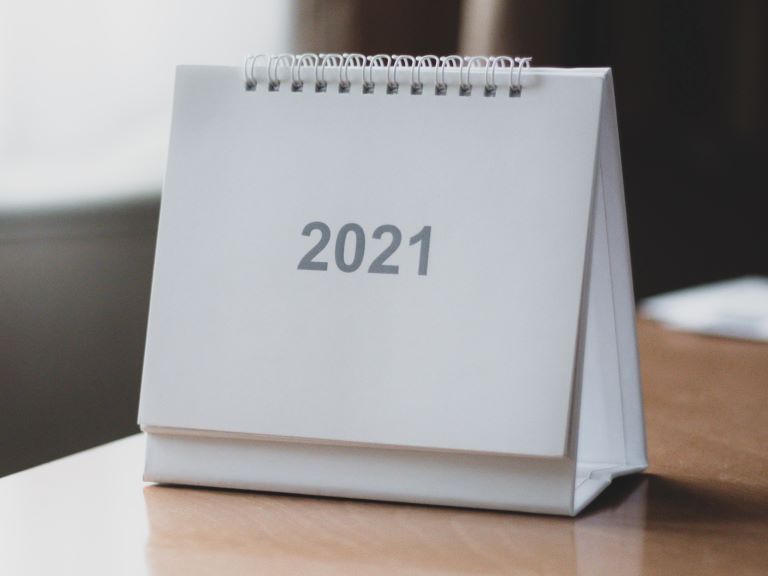
In 2021, the covid-19 pandemic continued to influence our desire to improve the safety and efficiency of our indoor spaces and we saw an increased public and private investment in energy-efficient technology, manufacturing, and policy. SEEA welcomed a new president, and we expanded and deepened our commitment to equity within our industry. In this notable year, these are the blog posts that you read, shared, and liked the most.
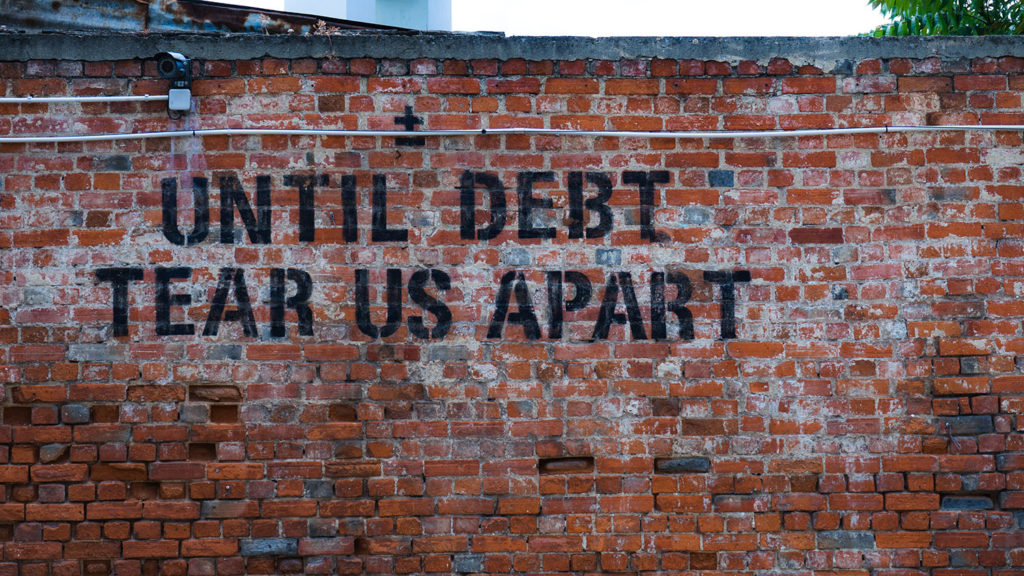
1. What is energy security versus energy burden?
Originally published March 15, 2021
Last month, SEEA released our report, Energy Insecurity Fundamentals for the South. We believe using common metrics is essential to creating robust and prescriptive policies that address the multiple dimensions of energy insecurity. […]

2. Going beyond recovery with the American Jobs Plan
Originally published April 22, 2021
For patients recovering from a major illness or trauma, doctors stress the importance of improving social wellness as a part of recovery. They prescribe getting back on your feet as the first step, but note that staying healthy requires a long-term investment in one’s physical, mental, and social health. […]
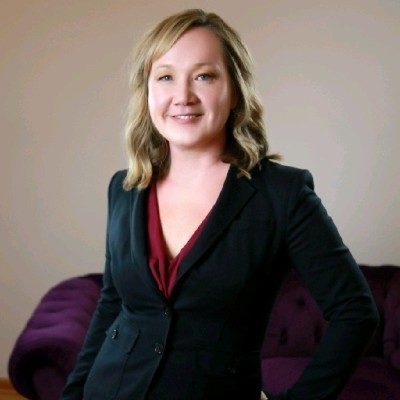
3. Energy efficiency for all – the opportunity ahead
Originally published May 6, 2021
While I officially started working at SEEA on April 26, I have had the pleasure of working with SEEA staff and board members for more than ten years. The team’s dedication to realizing a more energy efficient Southeast that benefits all people has long inspired my curiosity […]

4. How American Efficient is realizing a more diverse energy industry
Originally published November 10, 2021
The American Efficient DEI Action Team
Over the last year, a team at American Efficient developed a Diversity, Equity, and Inclusion (DEI) action plan to put some of our company’s values into practice. As a group of mostly white people in a mostly white company—and industry—we regard this as a privilege, in all senses of the word. […]
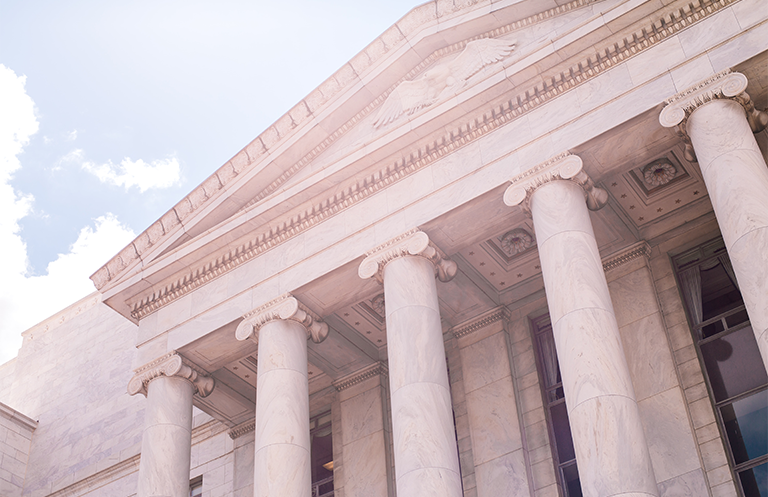
4. The Infrastructure Investment and Jobs Act will transform the Southeast
Originally published November 12, 2021
On Friday, November 5, the U.S. House of Representatives passed the Infrastructure Investment and Jobs Act. The bill passed the Senate in a bipartisan vote in August and President Biden is expected to sign the bill on Monday, November 15. The $1.2 trillion package is a historic investment in infrastructure that advances energy efficiency, resiliency, and electric transportation. Combined with the President’s Build Back Framework, it will average 1.5 million additional jobs every year for the next 10 years. […]
The Infrastructure Investment and Jobs Act will transform the Southeast

On Friday, November 5, the U.S. House of Representatives passed the Infrastructure Investment and Jobs Act. The bill passed the Senate in a bipartisan vote in August and President Biden has planned a signing ceremony for the bill on Monday, November 15. The $1.2 trillion package is a historic investment in infrastructure that advances energy efficiency, resiliency, and electric transportation. Combined with the President’s Build Back Framework, it will average 1.5 million additional jobs every year for the next 10 years.
More than $4.5 billion will be appropriated to the U.S. Department of Energy to fund vital energy efficiency programs such as the State Energy Program, Weatherization Assistance Program, and the Energy Efficiency and Conservation Block Grant Program. The act also dedicates more than $30 billion to electrifying transportation from personal vehicles to school buses, ports, and public transit. Supporting energy efficiency and electric transportation is especially important as we continue to recover from the covid-19 pandemic, while also addressing the impacts of climate change like stronger storms, extreme heat, and rising sea levels in the eleven southeastern states SEEA serves.
“These investments are critical as we harness the power of energy efficiency to transform the way we live, work, and thrive in the Southeast and nationally,” says SEEA president, Aimee Skrzekut. “We have an unprecedented opportunity to invest in a more diverse workforce, a more robust economy, and healthier housing to create a prosperous future for all.”
Key provisions in the bill include:
Energy Efficiency
- An online database to track energy demand, generation, storage, and emissions where available, in the contiguous 48 states (Title IV – Enabling Energy Infrastructure Investment and Data Collection, Subtitle B – Energy Information Administration);
- A new grant program to support the adaptation and implementation of updated building energy codes, which is estimated to save over $40 billion and 1,180 MMT of CO2 emissions over the next thirty years. (Title V – Energy Efficiency and Building Infrastructure, Subtitle B – Buildings, Section 40511);
- $10 million to educate and train workers on energy-efficient, modern building technology (Title V – Energy Efficiency and Building Infrastructure, Subtitle B – Buildings, Sections 40512 and 40513);
- A $250 million for a new revolving loan fund, Investing in New Strategies for Upgrading Lower Attaining Efficiency (INSULATE) that supports residential and commercial building energy audits and improvements prioritized in states with the poorest efficiency in buildings (Title V – Energy Efficiency and Building Infrastructure, Subtitle A – Residential and Commercial Energy Efficiency, Section 40502);
- Funding to support energy efficiency improvements and renewable energy improvements at public school facilities and nonprofit buildings (Title V – Energy Efficiency and Building Infrastructure, Subtitle D – Schools and Nonprofits);
- An Energy Jobs Council to oversee the National Energy Employment Report and related activities (Title V – Energy Efficiency and Building Infrastructure, Subtitle E – Miscellaneous); and
- Advancing industrial energy efficiency and smart manufacturing (Title V – Energy Efficiency and Building Infrastructure, Subtitle C – Industrial Energy Efficiency).
Resiliency
- A requirement that state regulators consider establishing rate mechanisms allowing utilities to recover costs associated with programs that promote demand response (Title I – Grid Infrastructure and Resiliency, Subtitle – A Grid Infrastructure and Reliability, Section 40104);
- Federal assistance to establish state energy security plans that protect energy infrastructure against physical and cybersecurity threats and ensure resiliency (Title I – Grid Infrastructure and Resiliency, Subtitle A – Grid Infrastructure and Reliability, Section 40108);
- Funding to research the application of codes and standards for the use of mobile and stationary batteries in flexible applications (Title I – Grid Infrastructure and Resiliency, Subtitle A – Grid Infrastructure and Reliability, Section 40111);
- Funding to research second-life applications for electric vehicle batteries as energy storage solutions (Title I – Grid Infrastructure and Resiliency, Subtitle A – Grid Infrastructure and Reliability, Section 40112); and
- Help for coastal Georgians to prepare for more extreme weather, coastal flooding and other disasters exacerbated by climate change.
Electric Transportation
- $2.5 billion to fund electric vehicle charging infrastructure in rural areas, low-and moderate-income neighborhoods, and communities with less public parking options (Title I – Federal-Aid Highways, Subtitle D – Climate Change, Section 11401);
- An Electric Vehicle Working Group of government, utilities, and manufacturers to report on the barriers to electric vehicle adoption (Title V – Research and Innovation, Section 25006);
- More than $6 billion to support a domestic supply chain for battery production (Title II – Supply Chains for Clean Energy Technologies, Section 40207);
- A requirement that state regulators consider measures to promote electric transportation adoption by improving charging infrastructure (Title IV – Enabling Energy Infrastructure Investment and Data Collection, Subtitle C- Miscellaneous, Section 40431);
- $5 billion to establishes a new grant program to replace existing school buses with zero or lower emission buses (Title XI – Clean School Buses and Ferries, Section 71101);
- Investment to expand electric vehicle charging stations and other zero emission initiatives in North Carolina, South Carolina, and Virginia; and
- Funding to replace the ridesharing transit fleet with zero-emissions vehicles in Gainesville, FL.
Additional Resources
- H.R. 3684 (Infrastructure Investment and Jobs Act), Full Text
- Infrastructure Investment and Jobs Act Fact Sheet, Alliance to Save Energy, August 2021
- Summary of EV-Related Provisions in Senate Version of H.R. 3684 – Atlas Public Policy, October 13, 2021
- Legislative Analysis for Counties, the Infrastructure Investment & Jobs Act, National Association of Counties, November 7, 2021
- Ready-to-Go: State and Local Efforts Advancing Energy Efficiency Toolkit, American Council for an Energy-Efficient Economy, November 9, 2021
We will continue to track resources and opportunities as they are deployed nationally, and at the state or municipal level. If you want to explore the provisions of the bill further or would like to know how your organization can get involved, email or schedule a call with Cyrus Bhedwar, director of energy efficiency policy.
2021 Election Highlights
*updated November 15, 2021
Julian Harden
Policymakers shape energy efficiency in many ways. The Biden administration’s prioritization of climate policy has created a lot of buzz around clean energy, electric vehicles, and workforce development. But there are several, less visible parts of the puzzle required to implement these initiatives including regulatory bodies like state energy offices and regulatory commissions, clean energy laws, and elected officials at the state and local level.
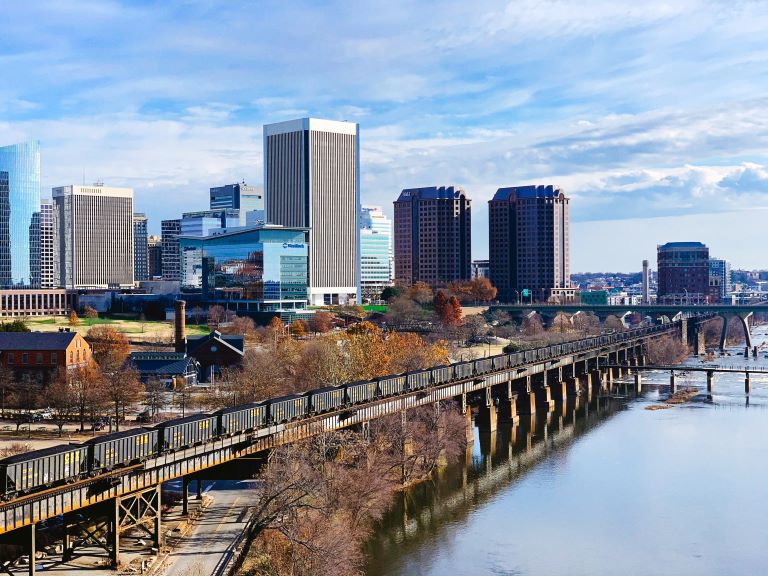
Election Results in the Southeast
In the lone gubernatorial election in the Southeast, former Virginia Governor Terry McAuliffe (D) lost to Republican challenger, Glenn Youngkin. Youngkin will take the office over from term-limited Ralph Northam (D). Republican Winsome Sears defeated Democrat Hala Ayla to become Virginia’s first Black woman to hold the office. Jason Miyares (R) will be Virginia’s next attorney general, upsetting two-term incumbent Mark Herring (D). Miyares is the state’s first Latino attorney general.
There was no clear winner in the Atlanta, GA mayoral race. Candidates Felicia Moore and Andre Dickens have qualified to advance to a November 30 runoff. Atlanta has previously committed to transitioning to 100 percent green energy by 2035 in 2019 and to a Climate Action Plan in 2015. Miami, FL re-elected Mayor Francis Suarez by a wide margin. In October, Miami-Dade County released a new Climate Action Strategy, which calls for expanding renewable energy sources and electric transportation in order to achieve net zero emissions by 2050. New Orleans, LA, incumbent Mayor LaToya Cantrell has won a second term in a crowded election. In June, the New Orleans City Council passed the Renewable and Clean Portfolio Standard (RCPS), which requires Entergy New Orleans, to achieve a 100 percent clean energy portfolio by 2050. New Orleans is one of only two cities nationwide that regulates the local investor-owned utility. Louisiana Gov. John Bel Edwards’ Climate Initiatives Task Force has set a goal of net-zero carbon emissions by 2050, but the task force’s initial strategies fall short of meeting that goal. The mayoral election has been postponed until November 13 due to Hurricane Ida. St. Petersburg, FL elected its first Black mayor, Ken Welch. In 2019, St. Petersburg announced an Integrated Sustainability Action Plan to achieve multiple sustainability and resiliency goals for the coastal city.
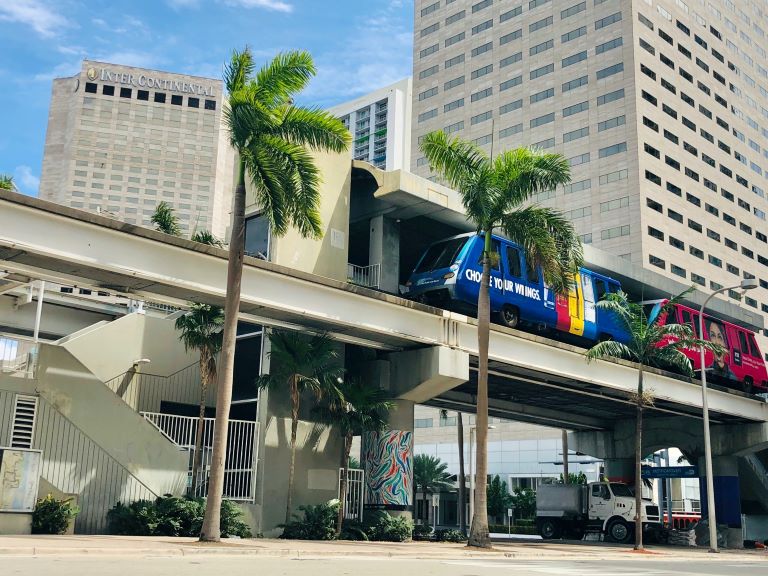
Regulatory Commissions
In Georgia, Governor Brian Kemp appointed Fitz Johnson to replace Chairman Chuck Eaton, who left the commission for a judgeship. The Chairman vacancy was filled by current Commissioner Tricia Pridemore. Florida Governor Ron DeSantis appointed Public Service Commissioner lawyer Gabriella Passidomo to a vacant seat on the five-member panel. The term of North Carolina Utilities Commission member Lyons Gray expired on June 30, 2021. Karen Kemerait, chosen to replace Gray, is currently waiting for approval from the state legislature. Alabama, Georgia, Louisiana, South Carolina, and Virginia will all have open commission seats in 2022.
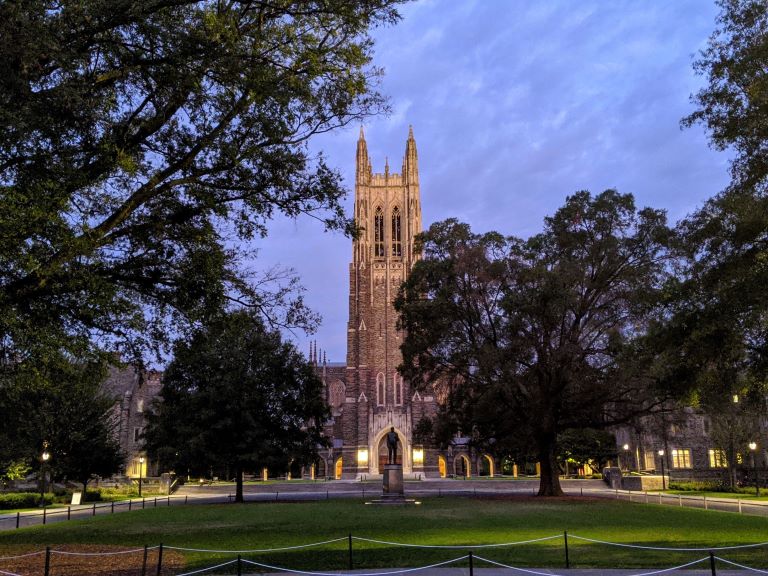
Legislation
Various state bills in the Southeast centered around clean energy have been signed or are pending approval.
Arkansas
- HB 1557 requires the state government to notify an electric utility of emergency warming and cooling centers set up during emergency weather events.
North Carolina
- HB 951 mandates the retirement of most coal-fired power plants in North Carolina by 2030. The bill leaves the specifics of how to cut carbon emissions in the hands of the North Carolina Utilities Commission (NCUC) and Duke Energy. Shortly after the bill passed, NCUC requested comments on proposed performance-based regulation rules and coal retirements. Coal retirements are a means to reach Governor Roy Cooper’s approved version of the bill, cutting greenhouse gas emissions from Duke Energy’s power generation 70% by 2030 and to be carbon neutral by 2050.
Florida
- HB 81 is currently pending and sets renewable energy goals for the state such as establishing deadlines for cutting carbon emissions in Florida.
2022 Legislative Session Schedules
| State | Convenes | Adjourns* |
| Alabama | January 11 | May 17 |
| Arkansas | January 10 | April 15 |
| Florida | January 11 | March 11 |
| Georgia | January 11 | March 31 |
| Kentucky | January 4 | March 30 |
| Louisiana | March 14 | June 1 |
| Mississippi | January 4 | April 1 |
| North Carolina | January 13 | June 30 |
| South Carolina | January 12 | June 15 |
| Tennessee | January 12 | May 7 |
| Virginia | January 12 | March 8 |
*estimated adjourn date
Source: http://www.statescape.com/resources/legislative/session-schedules/
This post recaps important state legislation and gives an overview of the results of state and local elections and appointments as they pertain to energy efficiency. This post is not intended to serve as a comprehensive resource of policy updates that may impact energy efficiency, but to provide a regional perspective on decisionmakers that influence energy efficiency and related topics.
How heat islands worsen energy inefficiency and inequality in our cities

Just after 6 p.m. on Saturday evening in August, policy manager, Claudette Ayanaba and I met at the Outdoor Activity Center in southwest Atlanta to volunteer with the Atlanta Heat Watch Campaign, led by Spelman College professors, Dr. Guanyu Huang and Dr. Na’Taki Osborne Jelks. The campaign uses volunteers to measure temperatures in various neighborhoods at different intervals and aims “to document how heat risk aligns with other important dimensions of population vulnerability to climate change, including race and ethnicity, income, access to air conditioning in the home, population comorbidities for heat illness, and public investment to-date in climate adaptation.”
Dr. Huang handed us a sensor made of white PVC pipe used to measure heat. He then pulled out his phone and texted me a link to the map of our route, which looked like a large puzzle piece outlining Midtown Atlanta. Volunteers measure temperatures along three routes: one south of downtown, one around Emory and Decatur, and the one we were assigned to, through Midtown and Inman Park. The intent was to evaluate how heat might differ in neighborhoods with different characteristics.
Claudette agreed to drive, and I called out the turns. We got in the car, and she set the GPS for Daddy D’z BBQ, our starting point just east of Downtown. As we started our route around 7 p.m., I noticed some nearby restaurant diners looking at the nearly two-foot-long arm of the heat sensor clipped to the window and sticking out over the car roof, likely questioning what we were doing.
It was a good question. Weeks before, Claudette and I both received emails inviting us to volunteer for the campaign. A few years ago, I might have skipped over this email, but recently SEEA has been researching and evaluating the influences on the access and affordability of energy, or energy insecurity. In 2020, we worked with the Texas Energy Poverty Research Institute (TEPRI) to create a StoryMap that illustrates the long-term and compounding energy impacts of discriminatory policy and racism on communities of color. The research draws a through line between historic racist housing policy and the high amount of inefficient housing in low-income communities today.
A family living in an inefficient home is hit with a double whammy if they live in a heat island, making it significantly more difficult and more expensive to cool their home in the summer. A heat island is an urban area that experiences higher temperatures than surrounding areas. Higher concentrations of emissions from traffic corridors, closely situated buildings, and a lack of green infrastructure can all contribute to a local 1 – 7 degree temperature increase. Heat islands can occur under various conditions, in small or large cities, in the suburbs, in different climates and seasons, and during the day or the night. However, for people in low-income communities, heat islands are an additional barrier to maintaining healthy and comfortable homes. Heat related deaths are the number one weather related cause of death, and low-income communities and communities of color experience it at much higher rates than affluent, predominantly white neighborhoods. Low owner-occupancy rates in historically segregated communities also means that residents typically have less control and fewer resources to improve the efficiency of their homes. In response to these realizations, Miami Dade County in Florida just appointed its first Chief Heat Officer to develop solutions for residents in anticipation of mounting negative impacts of rising heat on residents and other communities are expected to follow suit.
Energy efficiency is a powerful tool for mitigating the heat island effect and increasing temperatures due to climate change. Weatherization improvements like better insulation, sealing gaps in your attic or crawlspace, and advanced building technologies like smart thermostats and heat pump water heaters can lower energy bills and reduce the risk of heat-related illness in homes. An energy-efficient home holds its temperature more evenly and requires less energy and less money to heat or cool. Many electric utilities in the Southeast offer energy efficiency programs that connect customers with services, products, and rebates to improve energy efficiency. However there continue to be gaps in residents’ ability to access these resources. For two years, SEEA has been working with partners including the City of Atlanta and Georgia Power to identify energy efficiency solutions for homeowners, landlords, and renters in the six most energy-burdened ZIP codes in Atlanta. We’re learning about the specific challenges and needs faced in each area and designing solutions that provide residents more access to energy efficiency resources that could significantly improve their lives.
It was our understanding of all the compounding energy challenges facing Atlanta residents that led us to spend a couple hours on a Saturday evening driving around the city volunteering with the Atlanta Heat Watch Campaign. In that time, we noticed that most of our route was through tree-lined, more affluent neighborhoods. The streets included on our route were far greener than the roads we had travelled to Outdoor Activity Center, and in a few months we will learn about what impact that had on the temperature in each of those neighborhoods. While we did not gather any information on what people were experiencing inside their homes that evening, my experience tells me they likely used less energy than similarly sized homes in neighborhoods with fewer trees and green space. We look forward to learning more about the story the data tells and will provide updates to this blog post.
Additional Resources:
- Climate change is making the whole city hotter—but rising temps may put some Atlantans in more danger than others, Atlanta Magazine
- ‘Hotlanta’ is even more sweltering in these neighborhoods due to a racist 20th-century policy, CNN
- Tips on managing summer heat, UrbanHeatAtl & Spelman College students
COVID-19 Resources: Delivering customer support in a new world

Since our last post, new unemployment numbers for the energy efficiency sector have not been released. The most recent unemployment and disconnection information can be found in our previous post. We continue to monitor those reports and will update this series with new information as we receive it.
In the eighteen months since we first learned about COVID-19, we have realized that our lives would not be returning to normal as quickly as we had hoped, and there could be some new aspects of daily life that remain long after the coronavirus subsides. Many of us are still working at home, schools weigh continuing precautions, and while improved, unemployment remains high. We have been listening to how our industry and our members’ work has changed since spring 2020 and how it continues to adapt while we learn to live through a pandemic.
When service providers could not enter homes and provide services like home energy assessments and weatherization upgrades, organizations looked for other ways to keep the workforce engaged and provide uninterrupted services to customers. The pandemic also exposed the fault lines in the systems that deliver energy to our homes, schools, and businesses. Our community discovered an opportunity to ensure that all people could live and work in comfortable buildings, expand electric mobility, and create more prosperity across the Southeast.
In October 2020, we surveyed our utility partners and found that many energy efficiency programs had fully resumed, with adaptations or brand new programs to reach home-bound customers. In June, at the National Energy & Utility Affordability Coalition (NEUAC) annual conference, director of energy efficiency policy, Cyrus Bhedwar spoke on how to include more equity in program design, and we learned how program delivery is changing to reach more people at home. Some of the ways utilities are innovating around service barriers include:
- Phone-based walk-throughs with customers
- App-based surveys
- Virtual training for contractors
- Online applications and e-signatures
- Extended crisis benefits to customers affected by COVID
Technicians, service providers, and utilities have found these adaptations not only maintained business during a pandemic, but also improved many facets of program implementation like scheduling, cost, customer engagement, and delivery time. However, innovation does not come without some hurdles. Poor cell phone reception, battery life, and customer access to technology are common challenges. Implementers encountered issues such as trying to explain how technical instruments worked to nontechnical customers. Despite these concerns, companies are keeping many of the innovative approaches to providing remote or virtual energy efficiency services.
As the region, nation, and world grapples with how to tackle the coronavirus, the energy efficiency sector continues to take steps to improve the health, comfort, and resilience of our communities. We continue to seek out and monitor the ways in which our industry continues to adapt to a new way of working and living in a pandemic.
Additional Resources:
Energy Efficiency Jobs in America
E4TheFuture
Sustainable Energy in America 2021 Factbook
BCSE
Pursuing more equity in energy efficiency programs in the Southeast

SEEA’s approach to realizing a more efficient Southeast has grown in depth and reach in the eight years I’ve been with the organization. Our work increasingly spans a broad range of topics that are tied together by the aspiration for all people in the Southeast live and work in healthy and resilient buildings, utilize clean and affordable transportation, and thrive in a robust and equitable economy.
In May, we wrote about the game-changing potential of the American Jobs Plan. In addition to recasting the way we think about community, the plan includes a strong focus on providing opportunity for all Americans and to make amends for historic inequities built into the infrastructure of our country.
Last week, I had the pleasure of sharing how SEEA is thinking about its own contributions to a more equitable Southeast at the NEUAC 2021 Annual Conference. Our journey started at the tail end of our role in administering $25 million in funding from the American Recovery and Reinvestment Act in 2013 but I’m going to fast forward to last year.
Like many organizations, SEEA felt an urgency to accelerate and deepen its work on racial justice and energy equity issues in the summer of 2020. In partnership with TEPRI, SEEA published Energy Insecurity in the South which illustrates the deeply rooted connection between historic racial and economic inequities and the region’s current struggle with energy burden, and Energy Insecurity Fundamentals for the Southeast, which further defines the multiple dimensions of energy insecurity, including energy burden.
Energy insecurity is pervasive, particularly in the Southeast. More than a third of the region’s population has trouble paying their energy bills. The Southeast has the lowest electric rates in the contiguous United States, but the highest residential bills.
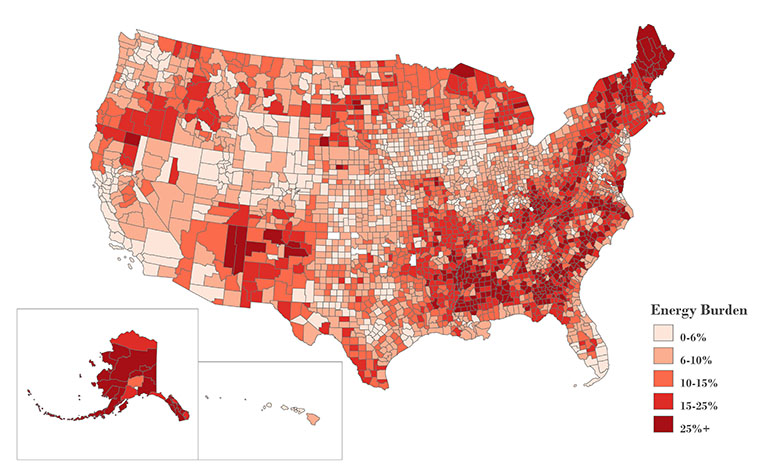
Housing segregation, or redlining, which led to disinvestment in communities of color, still shapes access to affordable energy in the South. Neighborhoods that were historically segregated often experience high levels of energy burden today.
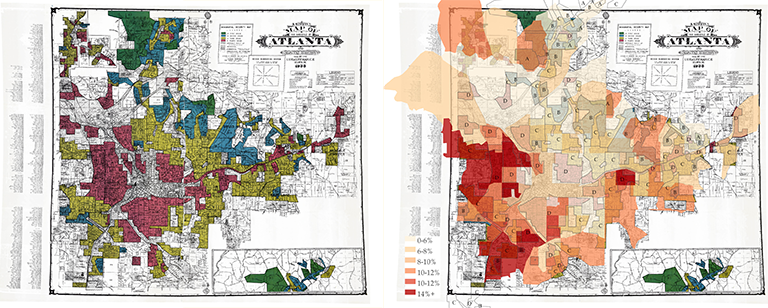
So how does this relate to energy efficiency? At SEEA, we’re exploring how energy efficiency can relieve energy insecurity and provide other benefits such as improved health outcomes through better indoor environmental quality. The next step is to determine how to get energy efficiency to those who need it most.
I have sat in hundreds of hours of meetings collaborating with utilities and regulators to develop energy efficiency programs that serve the utility’s customers. In that time, I have witnessed utilities and regulators express more interest in improving energy efficiency programs for low-income customers and growth in program size and sophistication.
Through our work, we have learned that focusing on “low-income” is often a proxy for addressing equity. As SEEA confronted the reality of racial injustice, we learned about the history as well as the breadth and variety of challenges experienced by communities that have faced systemic discrimination. In Atlanta, the median energy cost burden is 32% higher for Black households and 52% higher for Hispanic households compared to white households.
Simultaneously, we learned about how to think about equity. Our understanding will continue to evolve, but for now we use the following dimensions of equity:
Procedural equity, or that all affected communities have a voice in the decision-making process;
Distributional equity, or that programs are designed to equally distribute its benefits and burdens to the entire community; and
Intergenerational equity, or programs that consider how future generations will be impacted by the decisions being made today.
We then began to think about where equity starts in the energy efficiency program development process. We focused on regulated investor-owned utilities (IOUs) because of their more mature and consistent approach. Program development begins with evaluating energy efficiency potential and setting a spending or savings target. After analysis and design, the programs are deployed, evaluated, and the cycle repeats. Many utilities periodically conduct energy efficiency potential studies to determine how much cost-effective energy efficiency is available in their service territory and for which customer classes.
In the first stage of energy efficiency program development, analyzing factors including, but not limited to, customer segmentation, housing type, language spoken in the home, and ethnicity shed light on the program’s equity. This analysis evaluates how different customers perceive and participate in energy efficiency programs, or its distributional equity. For example, rebate-based programs often exclude customers who either cannot afford upgrades or are renters who do not have control over upgrades to their homes.
We can address distributional equity through procedural equity. If representatives from the communities being served have the opportunity for their voices to be heard during program development, the program has a higher chance of reaching more customers in those communities. Finally, as the Energy Insecurity in the South StoryMap illustrates, are decision makers accounting for structural and transgenerational inequities?
During a virtual SEEA member meeting we held last year to discuss long-term innovations in energy efficiency programs, we heard emphatically that, “energy efficiency needs more teachers!” Meaning, when programs and the people that deliver those programs don’t listen to the experiences and circumstances of the people they serve, those programs will reach fewer customers. When programs are delivered by contractors who are trained to listen to the needs of the customer, establish trust, and guide them through the process, programs are much more sustainable and successful.
Lastly, what indicators do we use to measure success, and how does equity factor into that evaluation? SEEA is currently developing a data collection and stakeholder engagement plan that will shape a guide to help decision makers at commissions and utilities consider equity throughout the energy efficiency program development process and develop approaches that meet their particular needs.
Energy efficiency is an evolving set of solutions that expands alongside our individual and organizational capacity for empathy. The Southeast has the greatest opportunity for growth in energy efficiency and an opportunity to ensure that prosperity reaches everyone.
We’ll continue to keep our members informed as we make progress in this area, in the meantime, please contact Cyrus Bhedwar, director of energy efficiency policy, with any questions or feedback.
Energy efficiency for all – the opportunity ahead

While I officially started working at SEEA on April 26, I have had the pleasure of working with SEEA staff and board members for more than ten years. The team’s dedication to realizing a more energy efficient Southeast that benefits all people has long inspired my curiosity and pushed me to expand how I view energy efficiency solutions. The team has consistently worked to understand the utility landscape and bring together leaders, advocates, and businesses to address the region’s most complex energy problems.
I sometimes hear the argument that energy efficiency is no longer relevant, that all the proverbial sockets have been plugged. However, energy efficiency is an evolving set of solutions that can offset the impact of a warming climate and I believe we are far from maximizing its many benefits. In Atlanta, the median energy cost burden is 32% higher for Black households and 52% higher for Hispanic households compared to white households. Energy efficiency lifts people out of poverty and contributes to a thriving, equitable economy in the Southeast. It is our single greatest resource in addressing the effects of climate change and the disproportionate energy burden costs for low-income and non-white households.
Our region’s health and housing issues can be mitigated through energy efficiency. Energy insecurity affects 35% of all homes in the South, and 7.5 million households have received utility disconnection or stop service notices. Residents in energy insecure homes, particularly children, are at higher risk for chronic illnesses like asthma that can be made worse by pests, moisture, and thermal distress. Lack of access to healthy, affordable homes is rooted in racist housing segregation and voter disenfranchisement, which still shape the region’s energy and housing sectors. Weatherization programs, along with updated energy codes for new construction as well as existing buildings keeps housing affordable, safe, and healthy for all communities, regardless of income.
Energy efficient transportation is also a powerful resource in combating the harmful effects of vehicle pollution. It reduces the outsized impact of poor air quality on low-income communities and communities of color. To counteract the historic inequities in transportation infrastructure, everyone must be included in the decision-making process to find ways for the energy and transportation sectors to create more affordable and accessible mobility options. Through education, collaboration, and promoting a diverse array of perspectives we can create wide-reaching policy that benefits all people who live in the Southeast.
Energy has become a necessary requirement of our modern lives. The fear of being without energy services keeps many people up at night, whether it is families struggling to keep the heat on or braving the hot summer without air conditioning to cover food and medication costs. This fear was a reality of my childhood. It drives me to eliminate that worry for future generations and ensure that all residents in the Southeast live, work, and play in healthy, affordable, resilient buildings.
We are fortunate to be entering an unprecedented time to improve our infrastructure through strategic investments in energy efficient housing and transportation, expanding manufacturing, and creating a more diverse workforce. This investment marks a new era in American history, an opportunity to build systems that provide more wealth, better health, and stronger communities for all of us. Here in the Southeast, we have the greatest opportunity for growth and expansion in the country. I am personally inspired and eager to embark on this journey with the team at SEEA. Their passion, commitment to SEEA’s mission, and deep well of knowledge energizes me and gives me the determination to seek out new partners, better solutions, and a more prosperous South for all.
Going beyond recovery with the American Jobs Plan

For patients recovering from a major illness or trauma, doctors stress the importance of improving social wellness as a part of recovery. They prescribe getting back on your feet as the first step, but note that staying healthy requires a long-term investment in one’s physical, mental, and social health. In the American Job Plan, the Biden administration expands the definition of infrastructure beyond roads and bridges to include basic services, public institutions, and community resources. These shared assets bring people together, enabling them to meet their own needs and provide support to others. The plan marks a sea-change in public policy-making, explicitly calling for investments that support better physical, mental, and social health across our society. This reflects a fundamental shift in our cultural understanding of infrastructure and makes the case for social wellness as a prescriptive path to move America beyond recovery and back on its feet.
In 2009, the Obama administration responded to the Great Recession with the American Reinvestment and Recovery Act (Recovery Act). From 2009 to 2015, SEEA served as an Energy Efficiency and Conservation Block Grant (EECBG) administrator for the Recovery Act, coordinating 16 municipal governments and more than $20 million in grant funds across the Southeast. These local partners deployed a variety of programs providing public education and outreach, residential and commercial audits and retrofits, and a range of financing mechanisms for energy efficiency. In stewarding this cohort, SEEA witnessed the transformative effect that national infrastructure initiatives can have on the Southeast. The experience also gave us insight into how and why these efforts can fall short of addressing the most pervasive and systemic problems.
In economic terms the Recovery Act was a success. It reversed the financial crisis, created tens of thousands of jobs, and rescued the U.S. economy from a second Great Depression. The Southeast saw a 387% ROI on DOE’s $20 million investment in energy efficiency alone. Despite these gains, the impact of the Recovery Act was ultimately stunted by a civic and social infrastructure that was unable to fully leverage the funding due to decades of under-investment. The gush of capital overwhelmed understaffed state energy agencies, makeshift city sustainability offices, and weatherization services operating on shoestring budgets and volunteer labor. In many ways, the Recovery Act revealed the limitations of the Southeast’s ability to marshal resources, make plans, and tackle complex problems. This strategic vulnerability in public management capacity was further illustrated by the COVID pandemic.
The Recovery Act relied on large block grants and a competitive proposal process that left states and local government to figure out where and how to invest funds. While this supported innovation and experimentation, it also missed an opportunity to make long-term infrastructure investments and institute reforms to housing policy, health services, and other foundational areas. Failing to close these gaps meant that low-income communities and communities of color remained largely unable to fully participate in the Recovery Act or realize its benefits, let alone overcome systemic inequities in economic opportunity. In contrast, The American Jobs Plan expressly recognizes the nexus between social wellness and economic growth and makes addressing existing inequities a core component in infrastructure planning.
The American Jobs Plan is an ambitious, wide-ranging proposal that aims to modernize and electrify our vehicles and transportation system, increase the resiliency and clean energy capacity of the electrical grid, and rebuild and refurbish our homes and buildings to be more affordable, safe and healthy. The plan stimulates job growth and invests in a workforce to rebuild the middle class. If fully implemented, the American Jobs Plan would be the most transformational re-making of the American economy since the New Deal. The plan though, is just that, a plan. It faces a number of political and logistical hurdles. Obstacles aside, the framework itself is already transformative in presenting a more inclusive, more humanistic definition of infrastructure and what is needed for people to not only survive but thrive. It has changed the conversation, trajectory, and scope of infrastructure planning from this point forward.
The American Jobs Plan goes beyond the optics of shovel-ready, quick wins and reinforces the cornerstones of our physical, civic, and social infrastructure. The plan would accelerate the growth of clean energy and transportation technology sectors already driving employment across the Southeast. It recognizes housing and buildings as equally critical assets where meaningful investment can yield economy-wide benefits. Most significantly, the American Jobs Plan acknowledges the intersectional nature of poverty and would expand access to needed services such as healthcare, aging in place, childcare, education, and job training. Investments in these life enriching resources expands access to the jobs and benefits that come with revitalized roads, bridges, and energy systems.
The Recovery Act was a historic investment that got the Southeast energy efficiency field on its feet. The region is fortunate now to have more experience in designing and delivering energy efficiency programs, a better sense of what works, and a deeper bench of trained professionals ready to take the next leap forward. Now, with the American Jobs Plan’s emphasis on rural communities, and prioritization of equity and restorative justice, the Southeast has the opportunity to go beyond recovery and invest in a social wellness that sustains the regions trajectory toward a cleaner, more prosperous, and more equitable future.
COVID-19 Resources
Our new COVID-19 Resources allows for more relevant and more frequent updates. You can access the original, archived resource page at any time.
We welcome your feedback and suggestions. Contact us anytime at [email protected].

Highlights
- The U.S. lost over 429,000 clean energy jobs from March to December, finishing 2020 with the fewest number of workers in the industry since 2015 It also marked the first year clean energy saw a decline in jobs over the previous year.
- Nationally, job losses in the clean energy and energy efficiency sectors increased 12% since the pre-pandemic era.
- 16,900 jobs were added nationally in December.
- Clean vehicles experienced ongoing job loss of 31,468 and recovered about 400 jobs.
- “Black and Hispanic workers continue to suffer from disproportionately high levels of unemployment overall, and Hispanic workers suffered increased unemployment rates in December. Women – particularly women of color – lost jobs in December overall while men gained jobs.”
- In December, the states with the largest gains, Texas, New York, North Carolina, and Florida secured more than 800 clean energy jobs
- “Over 40 states continue to suffer double digit job losses in clean energy with four states facing 20 percent or greater unemployment and one state, Georgia, facing 30 percent unemployment in the sector.”
- “The counties that suffered hardest as a percent of their workforce are Fulton County, GA; DeKalb County, GA; and Kern County, CA.”
Workforce Losses by Month (March – December 2020)
Workforce Losses by State (March – December 2020)
Related News
- EIA estimates in its Annual Energy Outlook 2021, that it will take 10 years for energy consumption from all energy sources to return to pre-pandemic levels.
- Bloomberg New Energy Finance and the Business Council for Sustainable Energy reports in the annual Sustainable Energy in America Factbook that although energy use dropped 3.8% overall, residential electricity use increased.


Highlights
- All eleven of the states in SEEA’s territory have resumed utility disconnections. Some commissions have restored winter disconnection moratoria to alleviate mounting customer arrearages.
- Customer arrearages or energy debt adds to a household’s energy insecurity. Energy insecurity is a key metric for understanding the inequitable distribution of the benefits and burdens of the energy sector to residents of the Southeast. Learn more about energy insecurity in our recent blog post, report, and storymap.
- NARUC has a new tracker following state responses to utility disconnections.
- NEADA tracks dates for COVID19 disconnection moratoria along side annual winter disconnection moratoria.
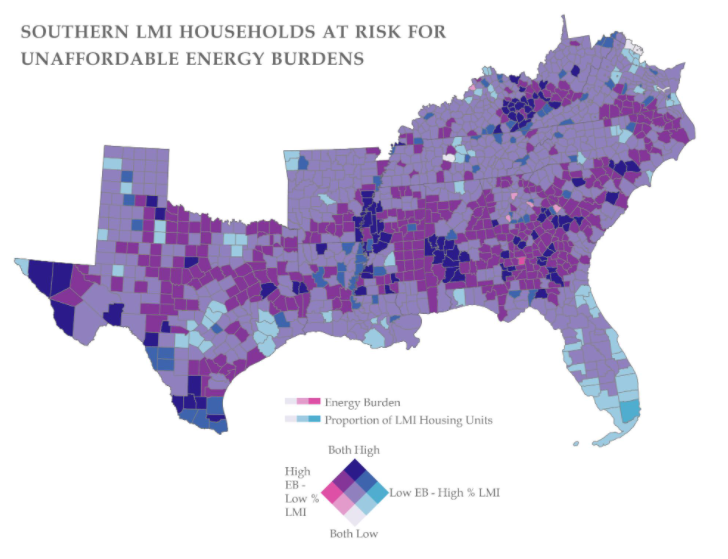
Related News
Our Top Energy Efficiency Stories of 2020
SEEA Staff

2020 was a year of firsts and hopefully some never-agains. We experienced the first global pandemic in over a century, grieved over the tragic consequences of systemic racism, and felt the uncertainty of a growing economic recession. The energy sector and the Southeast did not go unscathed. In this time of loss, we found resilience and a renewed purpose to bring our values into our work every day. These are the stories that kept us up at night, gave us hope, and reminded us that there is still work to be done.
Energy-Efficient Transportation
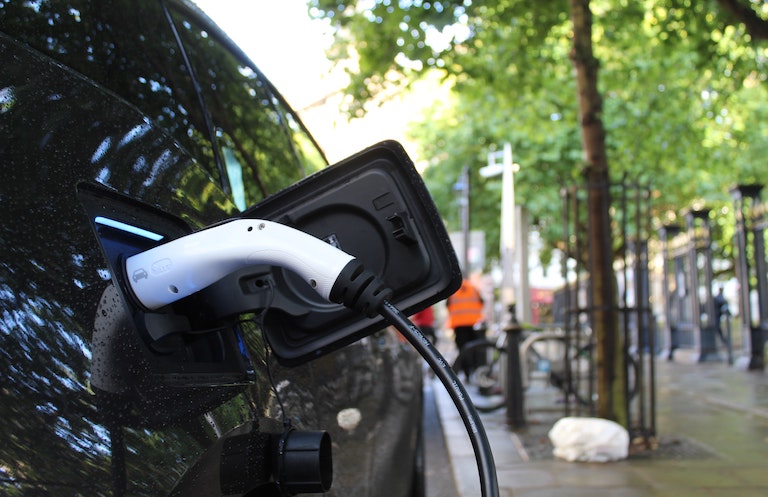
Electric vehicle (EV) infrastructure expanded throughout the Southeast in 2020. In North and South Carolina, Duke Energy Progress and Duke Energy Carolinas were approved to implement electric vehicle pilot programs that include the installation and operation of EV charging stations in public places and multifamily communities as well as publicly accessible fast-charging stations. The Florida legislature passed Senate Bill 7018, which paved the way for the development of a statewide electric vehicle infrastructure master plan. In December 2020, the Florida Department of Transportation submitted its draft of policy recommendations and is expected to complete the master plan by July 1, 2021.
EV manufacturing boomed throughout the region. Mercedes-Benz U.S. International has planned a new EV parts facility near Tuscaloosa, AL. GM announced plans to transition its existing assembly plant in Spring Hill, TN, to its third electric vehicle manufacturing plant in North America. Arrival, the U.K. electric vehicle startup, has chosen Charlotte, NC for its headquarters after announcing plans to build a microfactory in nearby Rock Hill, SC. These developments keep or create over 4,000 jobs in the Southeast and represent a $3 billion investment in local economies.
Energy Efficiency Policy

In spring 2020, the Virginia General Assembly passed and approved the Virginia Clean Economy Act (VCEA), requiring state utilities to produce 30% of their energy from renewables by 2030, close all carbon-emitting power plants by 2050, and attain mandatory energy efficiency savings targets. Additionally, the General Assembly made the Virginia Council on Environmental Justice a permanent advisory body to the executive branch, after operating on a temporary basis for nearly two years. The council will provide recommendations to protect vulnerable communities and integrate environmental justice into the state’s daily operations.
In 2019, four of the seven utilities subject to the Florida Energy Efficiency Conservation Act (FEECA) proposed reducing their energy efficiency goals to zero, or nearly zero, for the next decade. The Florida Public Service Commission (FPSC) rejected those goals and began to assess with state legislators how they might reform or reinterpret FEECA to improve energy savings. In early 2020, the FPSC opened docket 20200181 and requested commission staff to propose changes to the processes of setting goals and approving programs for energy efficiency. On January 14, 2021, policy director Cyrus Bhedwar participated in a workshop held by the FPSC on the FEECA revision process. The FPSC is accepting written public comments until February 15.
Both of these acts set the stage for decades of improved energy efficiency goals and clean energy standards, providing a healthier, more just future across the Southeast.
Built Environment

The onset of the economic recession caused by the COVID-19 pandemic revealed and made worse existing inequities in housing and energy for millions of Americans. In September 2020, research from Indiana University confirmed that energy insecurity, the inability to pay utility bills, is higher in households of color than their white counterparts. The American Council for an Energy Efficiency Economy (ACEEE) listed Birmingham, AL as the city with the highest energy burden and Alabama, Kentucky, Mississippi, and Tennessee the most energy burdened states in the country.
Because of this existing economic inequity, Black and Latino communities are most at risk for utility shut-offs. Access to electricity, gas, water, and broadband are all crucial to remaining healthy during a pandemic and sheltering at home.
2020 also affirmed that energy efficiency regulation works. An April FEMA study found that strong building codes, including energy codes, in Florida and California will save the country’s most disaster-prone states $1 billion annually. In its annual progress report, Department of Energy’s Better Buildings Initiative reported nearly $11 billion in savings since its inception a decade ago.
Diversity, Inclusion, & Integration

This summer there was a national calling to confront systemic racism and reform police practices. In the midst of this reckoning, private and public changes moved the region and the energy sector towards equity. In July 2020, Georgia Power’s Senior Vice President of Metro Atlanta & Corporate Relations Bentina Chisolm Terry took on an expanded role that includes Georgia Power’s work in underserved communities – people of color, the elderly, women, and LGBTQ+. In October 2020, Terry, and her colleague Latanza Adjei, Vice President of Corporate Services, were selected to the Atlanta Business League’s list of “Atlanta’s Top 100 Black Women of Influence.”
In August 2020, Department of Energy announced the first slate of Equity in Energy Ambassadors and Champions. The Ambassadors are responsible for leading efforts for ensuring diversity and equal access to energy. In Mississippi, residents overwhelmingly voted in the general election to remove Confederate imagery from the state flag. Similarly, Alabama voters approved an amendment that starts the process of deleting racist language from the state constitution inserted during the Jim Crow era.
While this work is not complete, these steps bend the arc of the universe just a bit more towards justice and equity.





